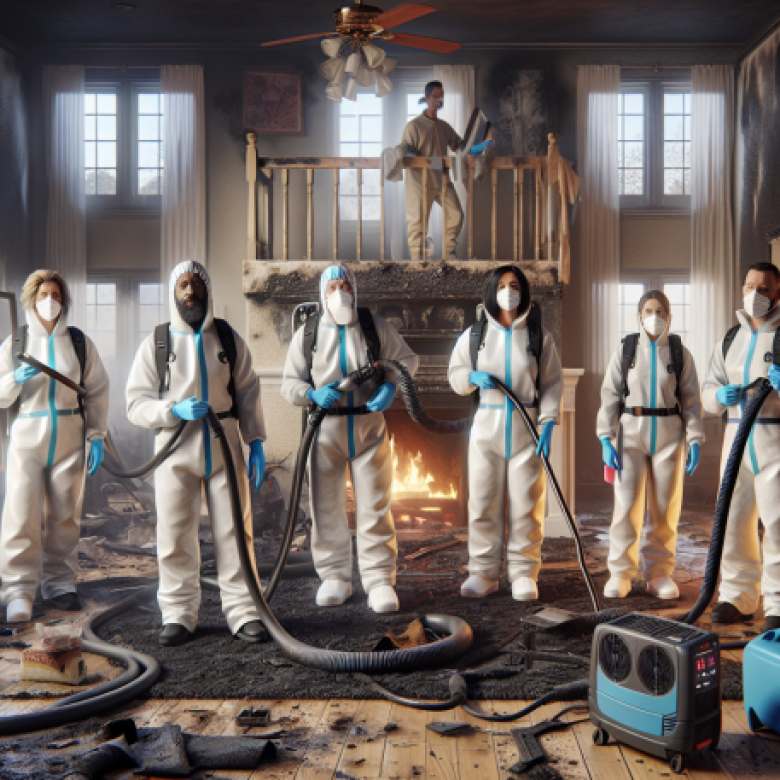Navigating the complexities of insurance coverage for property damage can be a daunting task. At Projekt Property Restoration, we understand this and aim to simplify the process for you. With over 16 years of experience in commercial and residential property restoration, we have gained extensive knowledge about insurance policies and how they apply to various types of property damage. This includes water damage, fire damage, mold infestation, and biohazard incidents.
Our team of experts works closely with insurance companies, ensuring that your claim is handled efficiently and that you receive the coverage you’re entitled to. We are committed to helping our clients understand their insurance coverage for property damage, making the restoration process as smooth as possible.
In this blog, we will delve into the intricacies of insurance coverage, providing you with valuable insights on what to expect and how to maximize your benefits. We will cover topics such as understanding your policy, what is typically covered, and how to file a claim.
Whether you’re dealing with minor water damage or a major fire incident, knowing your insurance coverage can make a significant difference. Stay tuned to our blog for more information and feel free to reach out to us for any property restoration needs. Our commitment to customer satisfaction, 24/7 availability, and free project estimates sets us apart in the industry.
Remember, understanding your insurance coverage for property damage is crucial in ensuring a quick and efficient restoration process. Trust Projekt Property Restoration to guide you through this process and help you get back to your normal life.
Decoding the Basics: What Does Your Property Damage Insurance Really Cover?
Understanding the intricacies of your property damage insurance can be a daunting task. However, it is essential to know what your policy covers to ensure you’re adequately protected. This article aims to decode the basics of property damage insurance, helping you understand what your policy really covers.
Property damage insurance is a type of coverage that helps pay for damage to your home, other structures on your property, and personal belongings due to a covered peril. Covered perils typically include fire, windstorms, hail, lightning, theft, and vandalism. However, it’s important to note that not all perils are covered, and exclusions may apply.
“Insurance is a contract, a risk transfer mechanism whereby a company (insurer) promises to compensate the insured in the event of a loss.”
The first step in understanding your property damage insurance is to familiarize yourself with the terms and conditions of your policy. This includes knowing the policy limits, deductibles, and exclusions. The policy limit is the maximum amount the insurance company will pay for a covered loss. The deductible is the amount you’re responsible for paying before your insurance coverage kicks in. Exclusions are specific situations, conditions, or circumstances that are not covered by the policy.
- Policy Limits: The policy limit is the maximum amount the insurance company will pay for a covered loss. For example, if your policy limit is $200,000 and your home is destroyed in a fire, the most you would receive from your insurance company is $200,000, regardless of the actual cost to rebuild your home.
- Deductibles: The deductible is the amount you’re responsible for paying before your insurance coverage kicks in. If your deductible is $1,000 and you have $5,000 in damages, you would pay the first $1,000 and the insurance company would pay the remaining $4,000.
- Exclusions: Exclusions are specific situations, conditions, or circumstances that are not covered by the policy. Common exclusions include damage caused by floods, earthquakes, and normal wear and tear.
It’s also important to understand the difference between replacement cost and actual cash value. Replacement cost is the amount it would take to replace or rebuild your home or repair damages with materials of similar kind and quality, without deducting for depreciation. Actual cash value is the amount it would take to repair or replace damage to your home after depreciation.
“Replacement cost is the amount it would take to replace or rebuild your home or repair damages with materials of similar kind and quality, without deducting for depreciation.”
If you’re unsure about any aspect of your property damage insurance, it’s always a good idea to consult with a professional. At Projekt Restoration, we offer a range of services to help you navigate the complexities of property damage insurance. We can assist with consulting, mold assessment, and reconstruction services, among others.
In conclusion, understanding your property damage insurance is crucial to ensure you’re adequately protected. By familiarizing yourself with the terms and conditions of your policy, knowing what perils are covered, and understanding the difference between replacement cost and actual cash value, you can better prepare for potential losses and navigate the claims process with confidence.
Navigating the Fine Print: How to Maximize Your Insurance Coverage for Property Damage
Understanding the intricacies of your insurance coverage for property damage can be a daunting task. The fine print often contains critical information that can significantly impact your claim. However, with a strategic approach, you can navigate this complex terrain and maximize your insurance coverage.
Firstly, it’s essential to familiarize yourself with the terms and conditions of your policy. These details are typically found in the policy declarations, exclusions, and endorsements. The declarations page outlines the policyholder’s information, the insured property, policy limits, and deductible. Exclusions specify what is not covered by the policy, while endorsements are modifications to the original contract.
Understanding these components can help you identify potential gaps in your coverage. For instance, if your policy excludes certain types of water damage, you might need to purchase additional coverage. You can consult with a professional to help you understand these details. Projekt Restoration offers a comprehensive consulting service that can guide you through this process.
Secondly, you should be aware of your policy’s limits and deductibles. The policy limit is the maximum amount the insurer will pay for a covered loss. The deductible is the amount you’re responsible for paying before your insurance coverage kicks in. If your deductible is high, you might need to set aside funds to cover this cost in the event of a loss.
It’s also crucial to understand the difference between actual cash value (ACV) and replacement cost value (RCV). ACV is the cost to replace an item, less depreciation, while RCV is the cost to replace the item with a new one of similar kind and quality. Depending on your policy, you might be reimbursed on an ACV or RCV basis.
In the event of a loss, it’s important to document the damage thoroughly. This includes taking photographs, making a list of damaged items, and keeping receipts for any repairs or replacements. This documentation can support your claim and help ensure you receive the maximum payout.
You should also be aware of your responsibilities after a loss. This might include mitigating further damage and promptly reporting the loss to your insurer. Failure to fulfill these duties could result in a reduced payout or denial of your claim.
If you’re dealing with water damage, you might need to consider dehumidification to prevent further damage and mold growth. Similarly, if your property has been affected by fire, you might need fire damage restoration services. Projekt Restoration offers a range of services to help you recover from a loss and fulfill your responsibilities under your insurance policy.
Lastly, if you’re having trouble with your claim, you might consider hiring a public adjuster or an attorney. These professionals can negotiate with your insurer on your behalf and help ensure you receive a fair settlement.
In conclusion, navigating the fine print of your insurance policy can be challenging, but it’s crucial for maximizing your coverage. By understanding the terms and conditions, knowing your policy’s limits and deductibles, documenting damage thoroughly, fulfilling your responsibilities after a loss, and seeking professional help when needed, you can ensure you’re adequately covered for property damage.
In conclusion, understanding your insurance coverage for property damage is crucial in safeguarding your valuable assets. It not only provides financial protection against unforeseen circumstances but also offers peace of mind. It’s essential to thoroughly read and comprehend your policy, ask questions, and seek professional advice if needed. Remember, insurance is not just about making a claim when disaster strikes; it’s about ensuring that you have adequate coverage to rebuild and recover. By staying informed about your policy, you can make the most of your insurance coverage and ensure that your property is well-protected.




